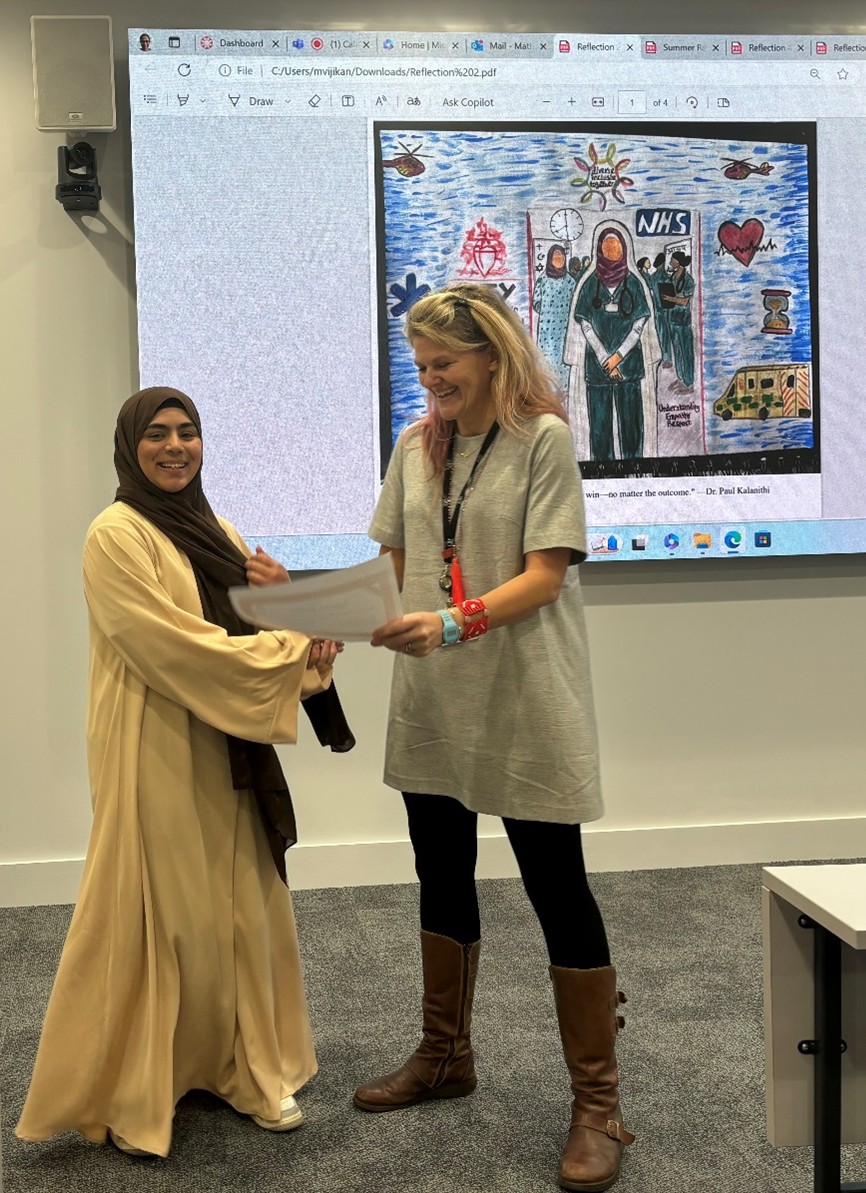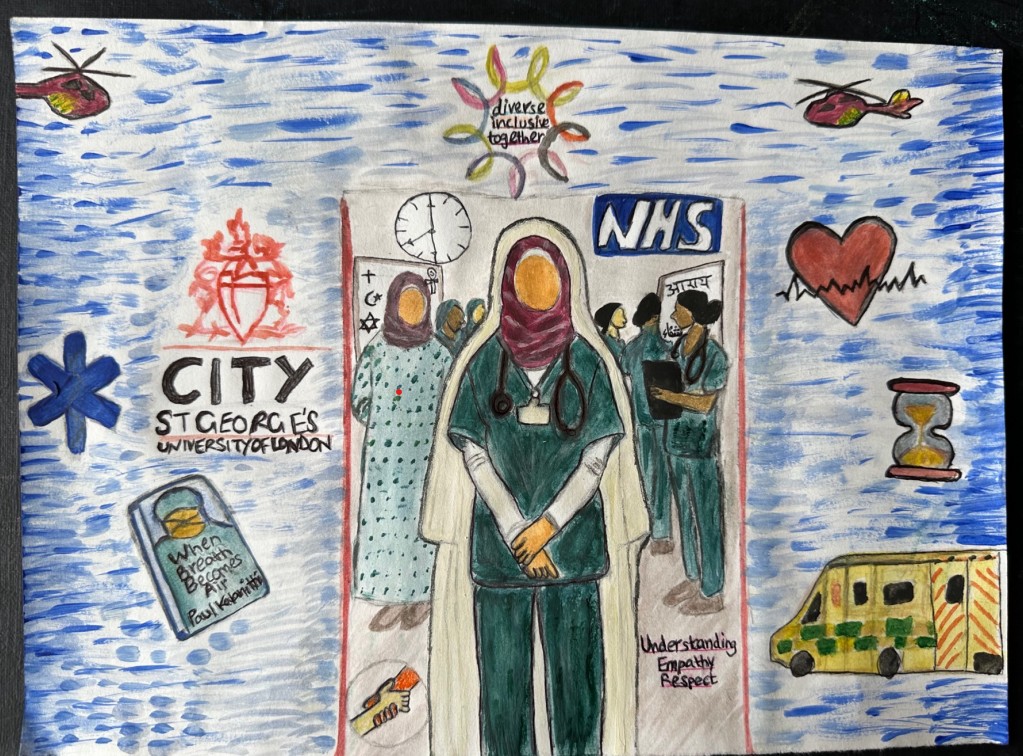The Masters in Physician Associate Studies (MPAS) faculty successfully ran their first reflection competition to encourage deep reflective practice among students.
With the help of Naireen Asim, an ERA placement student, and guidance from Dr. Mathavi Uthayanan and Amy Donaldson-Perrott, they developed the competition rubric and information sheet. This initiative allowed for creativity alongside reflective practice, making it unique and engaging for all MPAS students.
Here is the winning blog and artwork from Rabeea Bhutta, Year 2 MPAS Student.

Rabeea Bhutta, second year physician associate student, receiving her certificate for winning the first prize in the departmental ‘Reflection competition 2024’ with her creative reflection submission displayed on the screen in the background.
"When you treat a person, I guarantee you win—no matter the outcome." —Dr. Paul Kalanithi (2016), When Breath Becomes Air During my GP placement at City St. George’s University of London, I encountered a middle aged African woman newly diagnosed with a chronic condition. Although she spoke English fluently, her hesitation in asking questions revealed deeper cultural barriers. While explaining her treatment, I noticed a disconnect—was it unfamiliarity with the healthcare system or cultural deference to authority?

Artwork by Rabeea Bhutta
This moment is captured in my artwork, where a Physician Associate student gazes into a mirror and sees herself as the patient. The mirror represents the shared vulnerabilities between healthcare providers and patients, transcending cultural and professional boundaries. It symbolizes understanding, empathy, and respect—essential elements of patient care. The broken heart in the NHS setting emphasizes how, without cultural competence, the heart of care fractures. The hourglass signifies the fleeting nature of time during consultations and the urgency to build trust.
Using Gibbs’ Reflective Cycle (1988), I start with the description: a consultation that was medically sound but culturally lacking. My feelings shifted from confidence to discomfort as I sensed her unease—a reflection of my own experience with chronic illness. In evaluation, I recognized that while I provided clinical care, I failed to connect with her emotionally and culturally. This led me to question: Could I have bridged the cultural gap more effectively? In analysis, I revisited Betancourt et al. (2003), who emphasize that cultural competence is crucial in reducing health disparities. My artwork reflects this by juxtaposing the healthcare provider and patient, both represented by the same figure—highlighting that cultural barriers can exist on both sides of the consultation. Her eyes drifting to the clock, symbolized by the hourglass in the artwork, underscored the pressure of time and the need to establish a connection before it runs out. In conclusion, I realized that understanding her cultural background was just the first step. The real challenge was integrating that understanding into the consultation to make her feel seen, heard, and respected. This is where Purnell’s Model of Cultural Competence (2012) became vital, helping me recognize the importance of culturally sensitive communication. My action plan involves personal growth and advocating for enhanced cultural competence training. Inspired by Kalanithi’s (2016) reflection on shared humanity, I will push for practical training that moves beyond theory, focusing on real-world applications that foster understanding, empathy, and respect in every consultation.
Finally, the artwork touches on the broader theme of diversity in healthcare. By depicting women in leadership roles, it challenges cultural norms and underscores the importance of representation. A diverse healthcare workforce ensures that all patients, regardless of background, feel respected and valued.
As Storie (2021) emphasized, "reflection connecting theory to personal experience fosters growth." By linking my reflection to the artwork, I’ve captured both the emotional and professional journey and outlined a vision for a more inclusive healthcare system—one where every patient feels seen, heard, and respected, regardless of their cultural background.